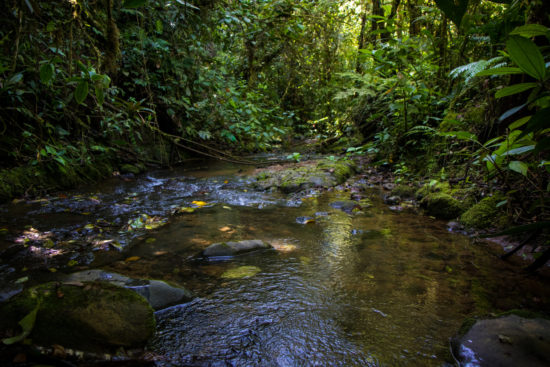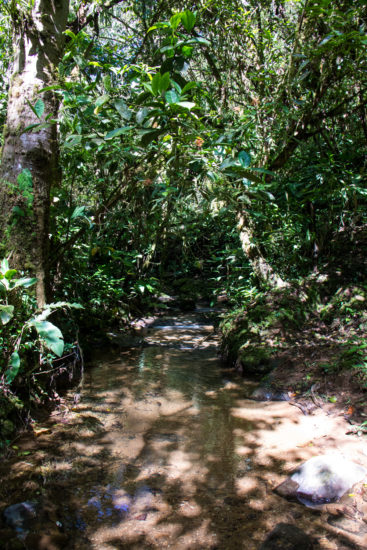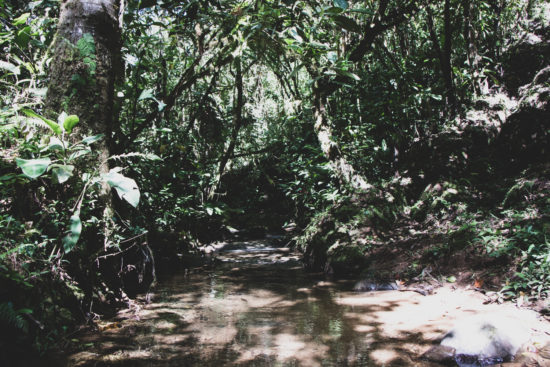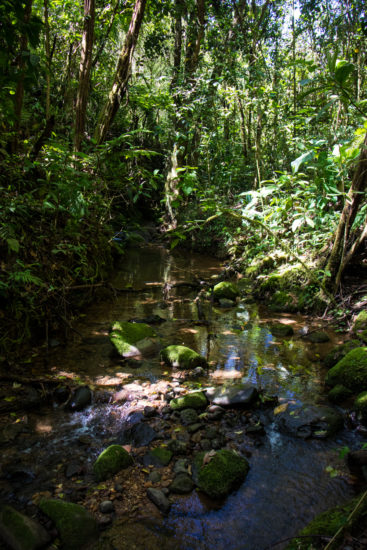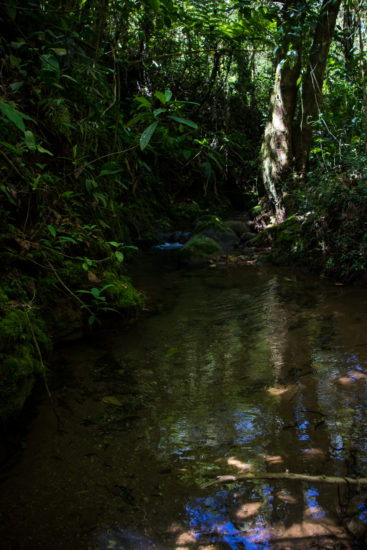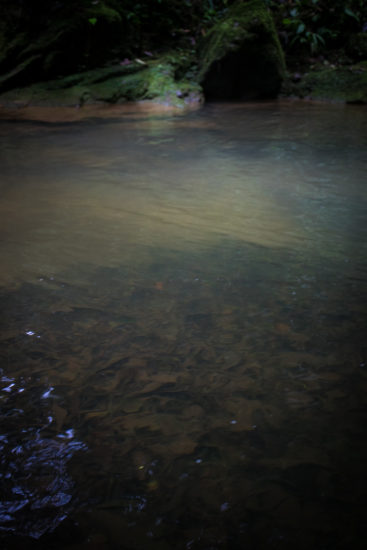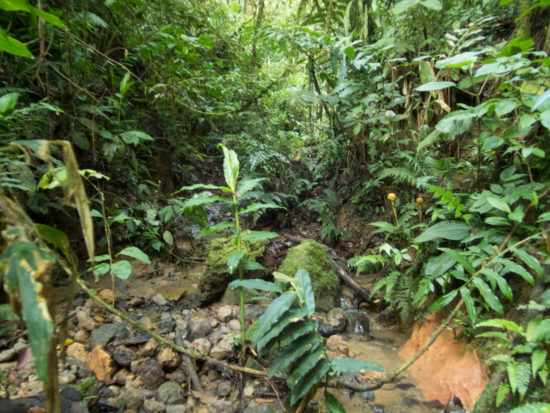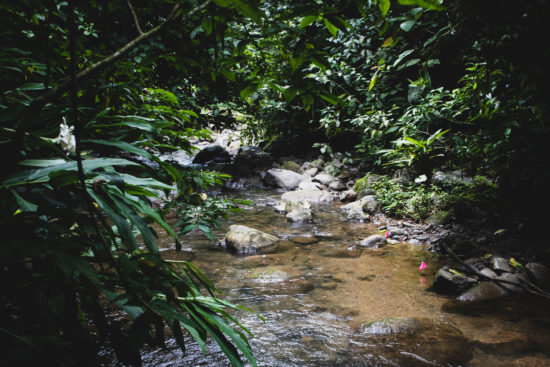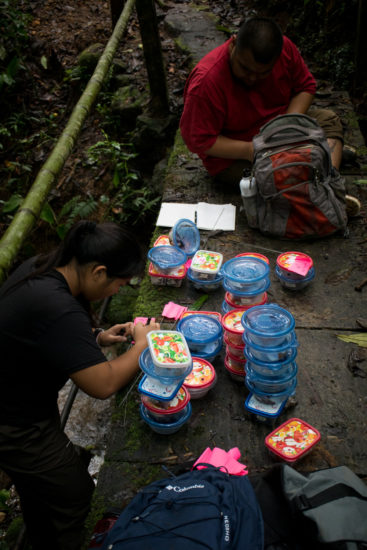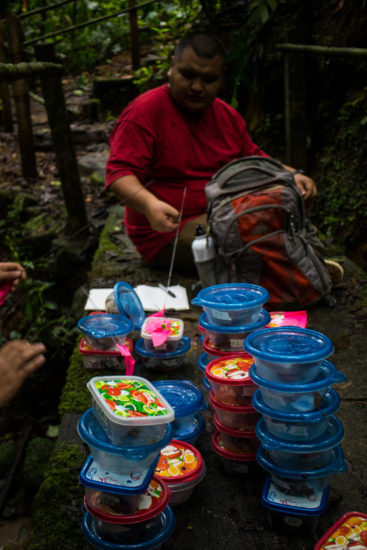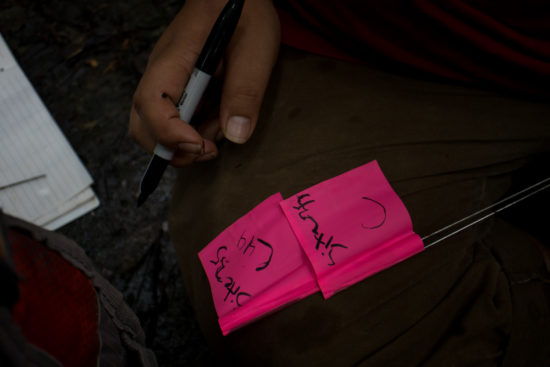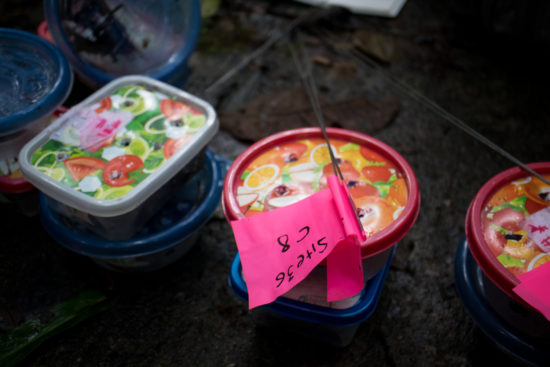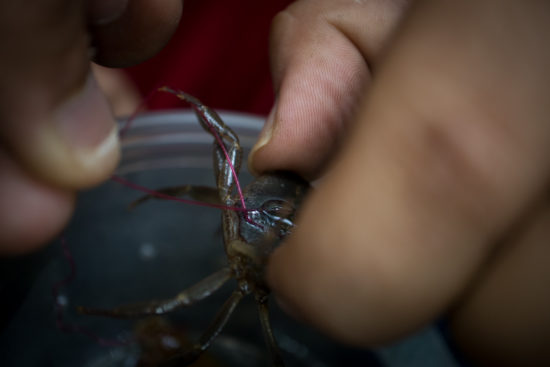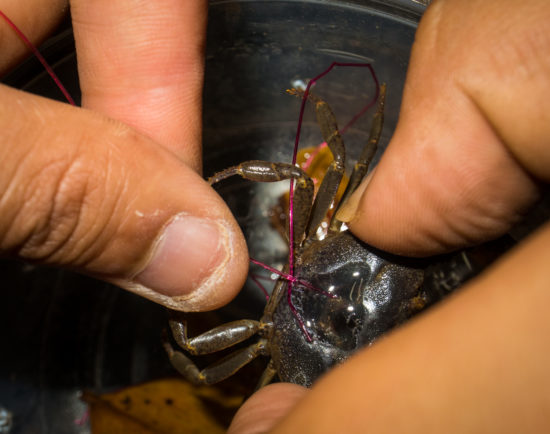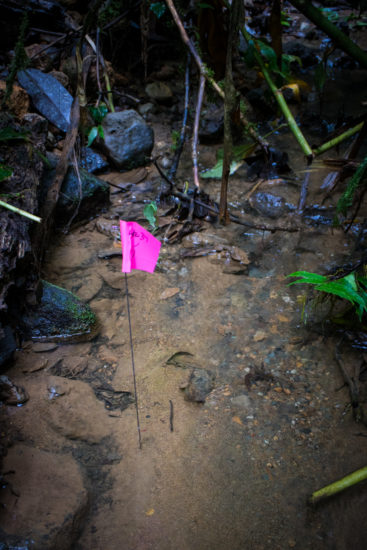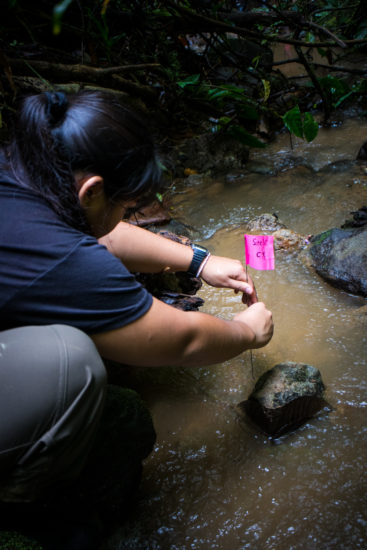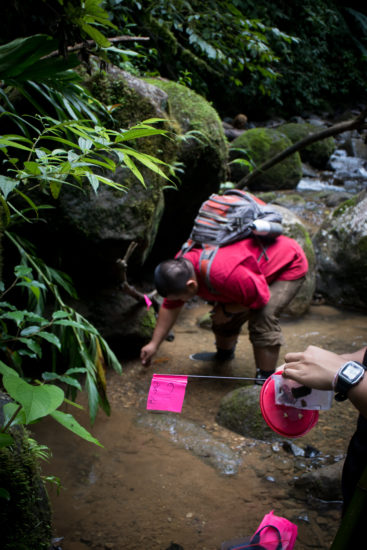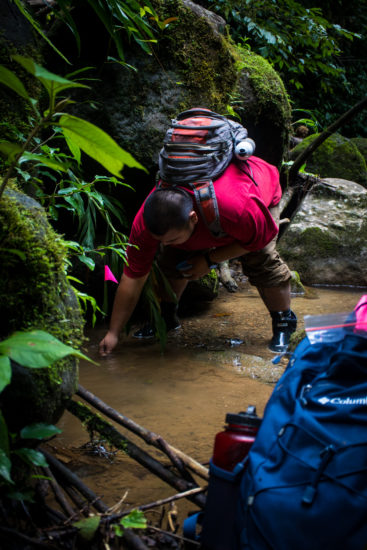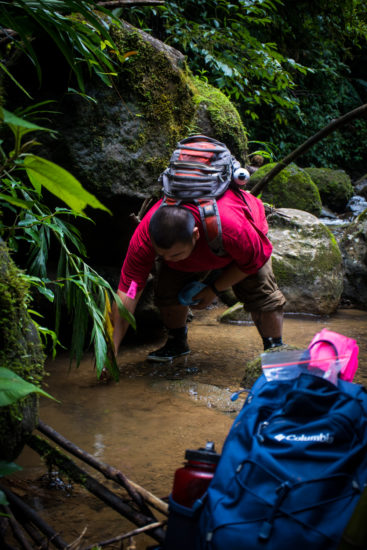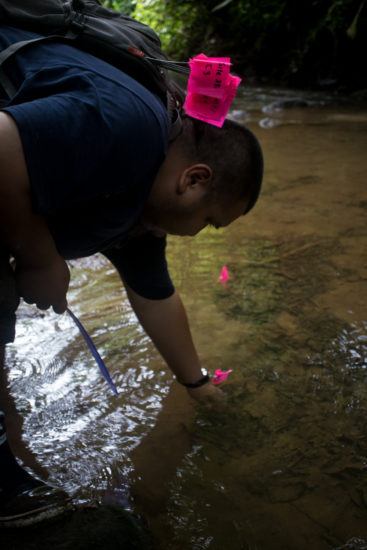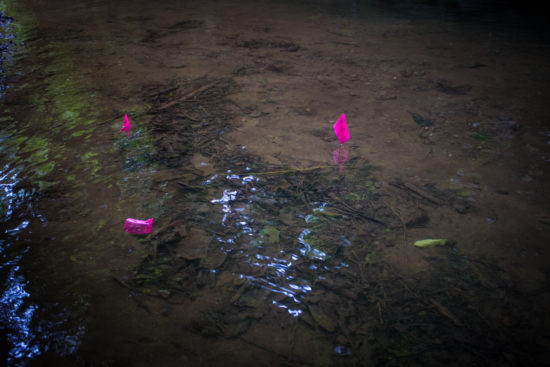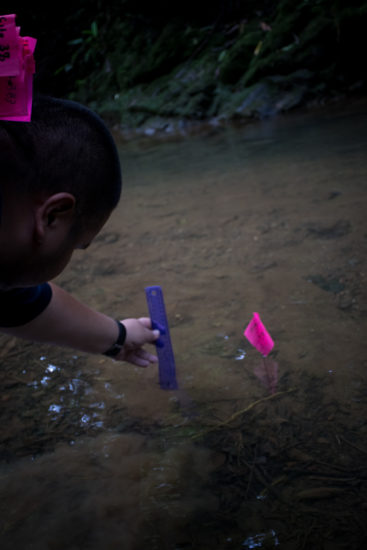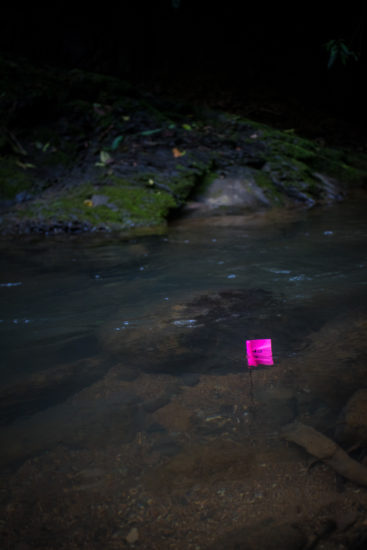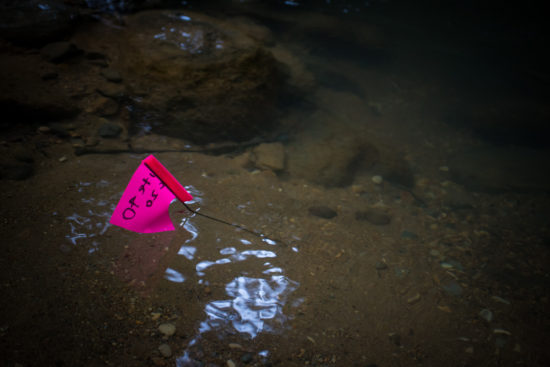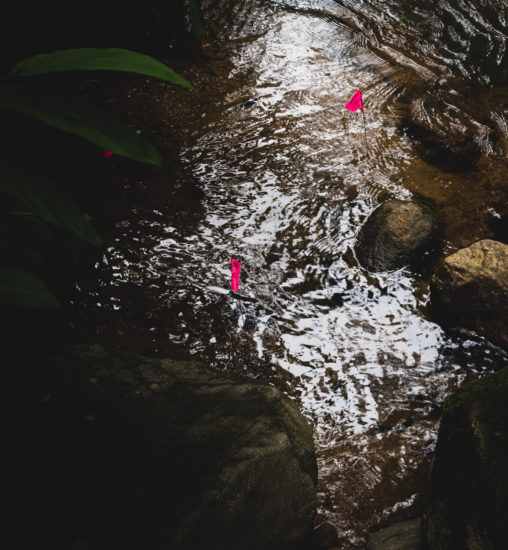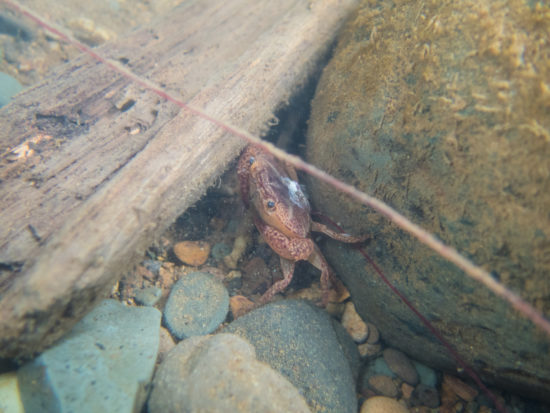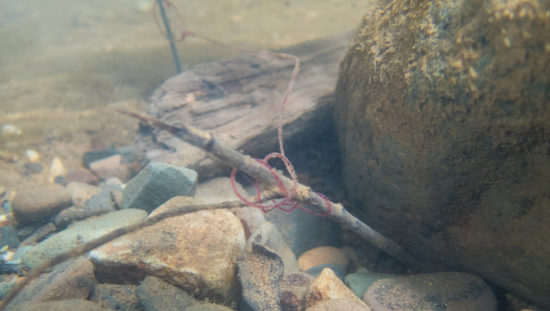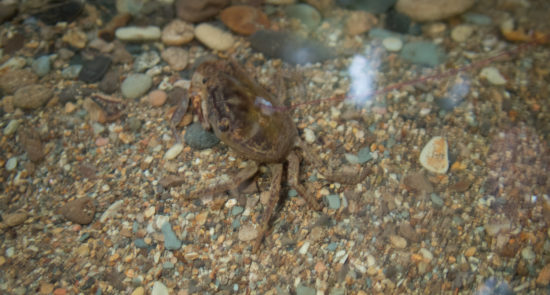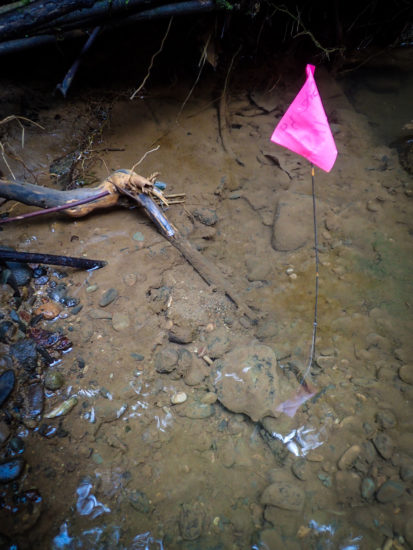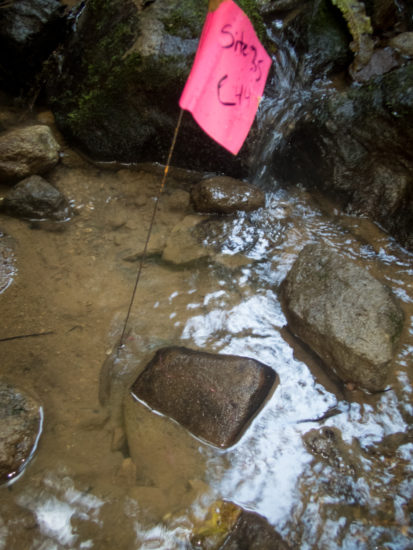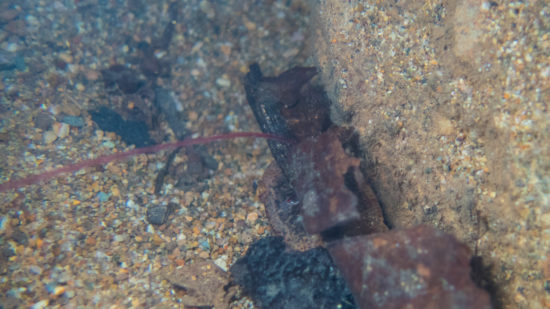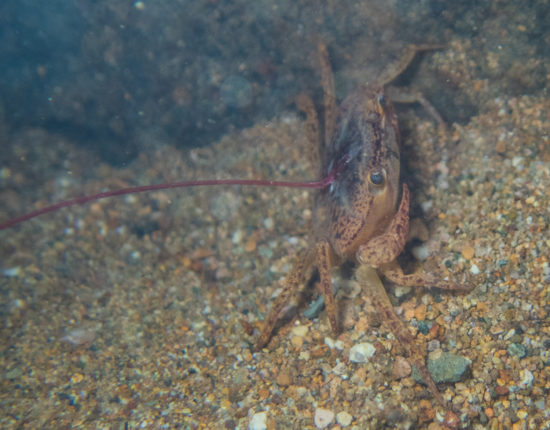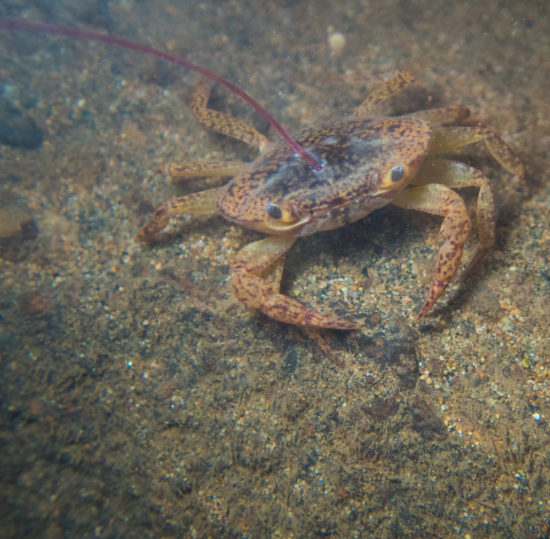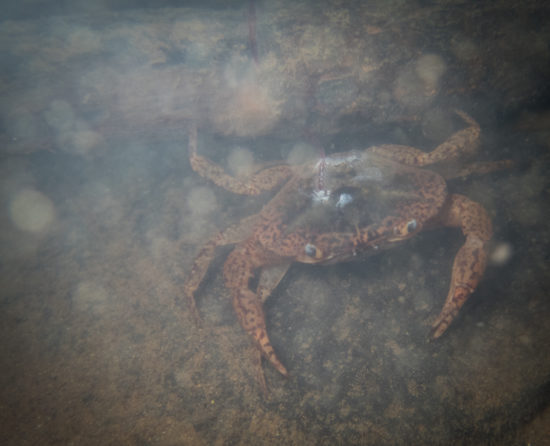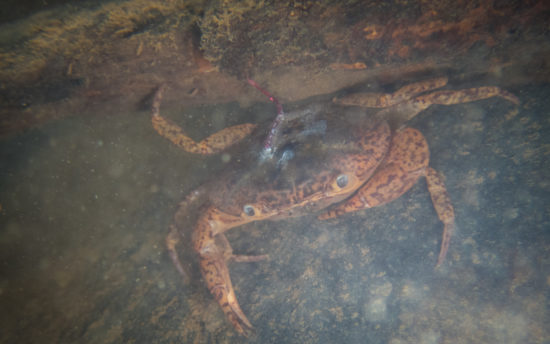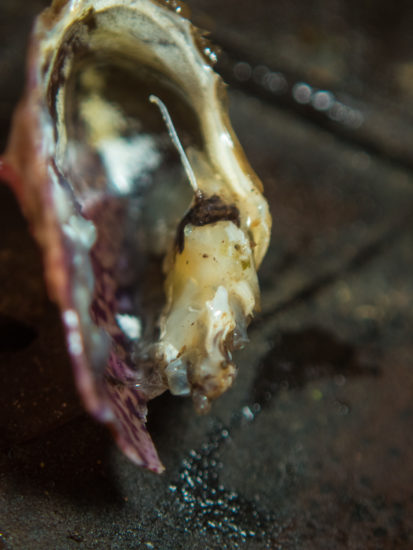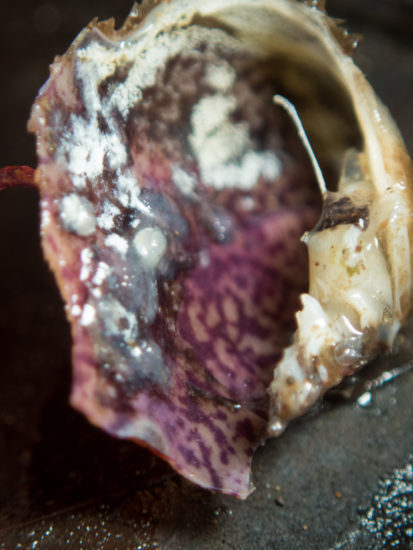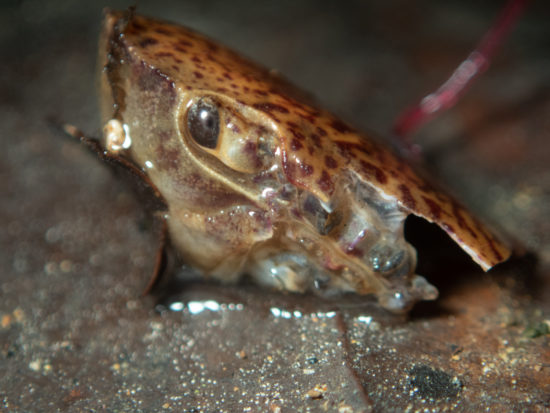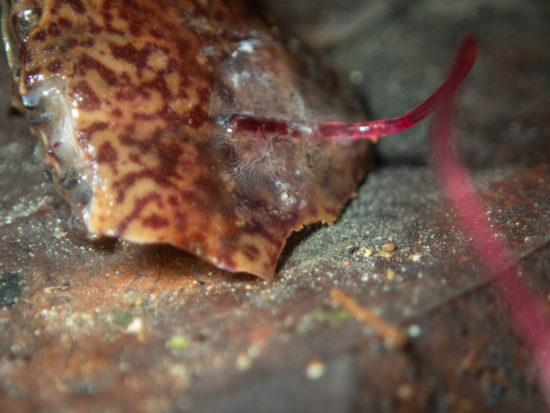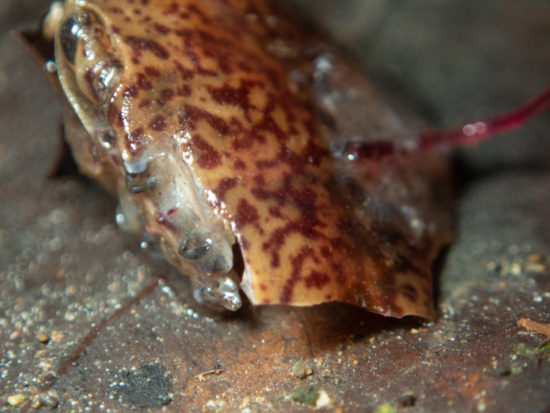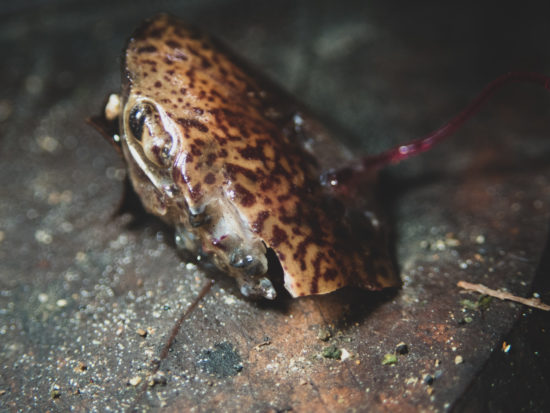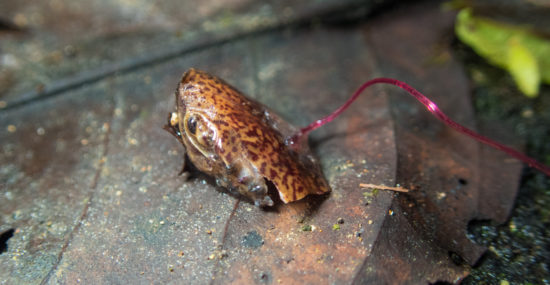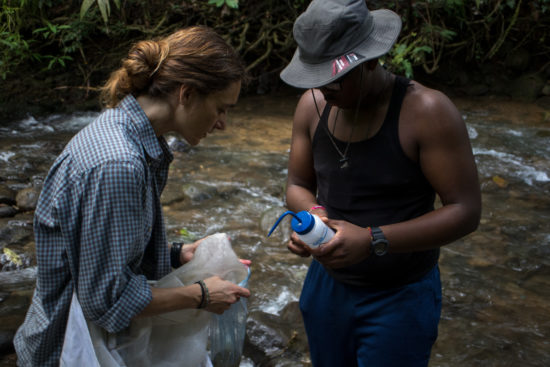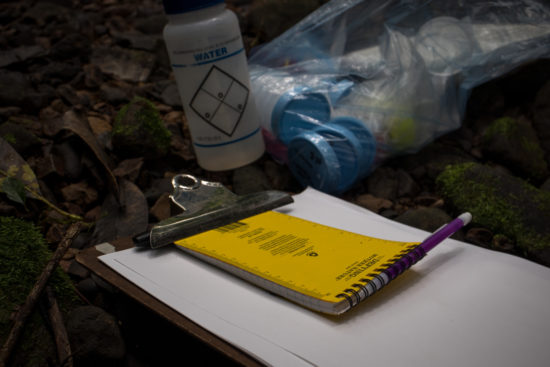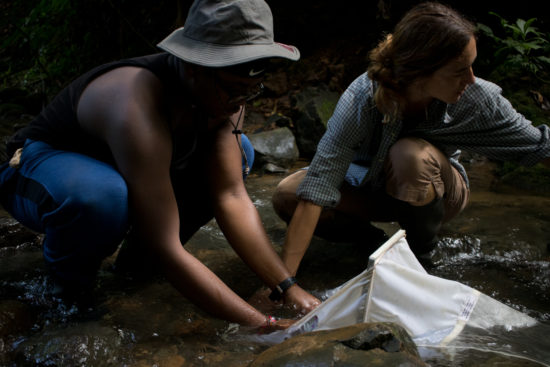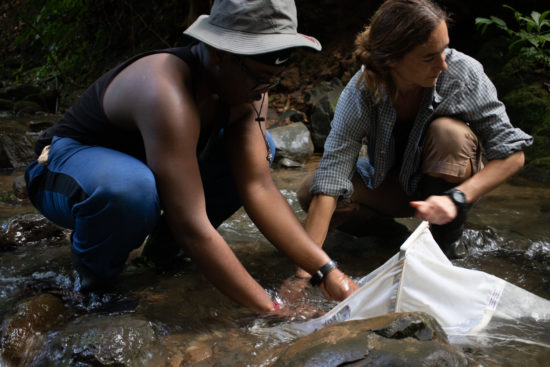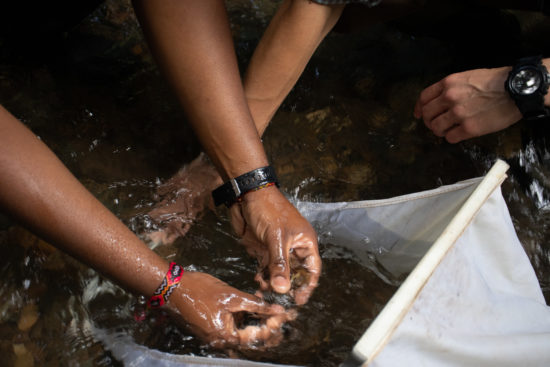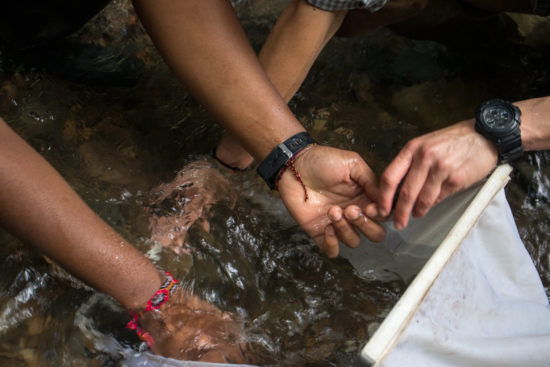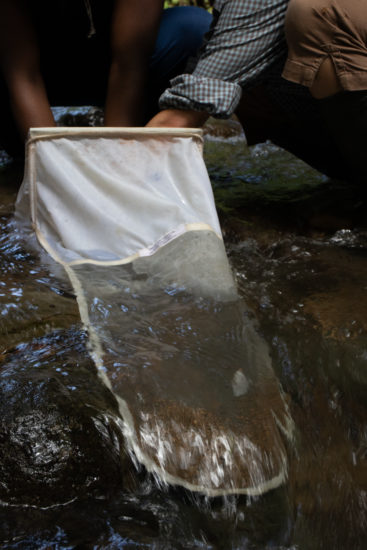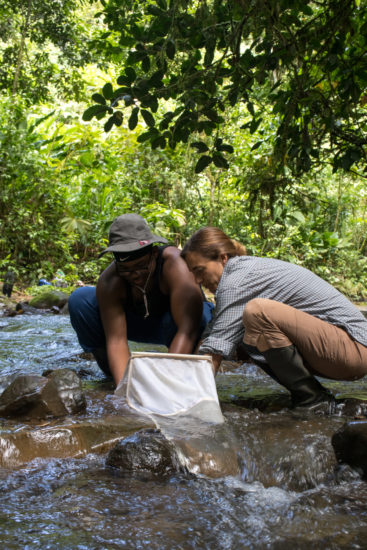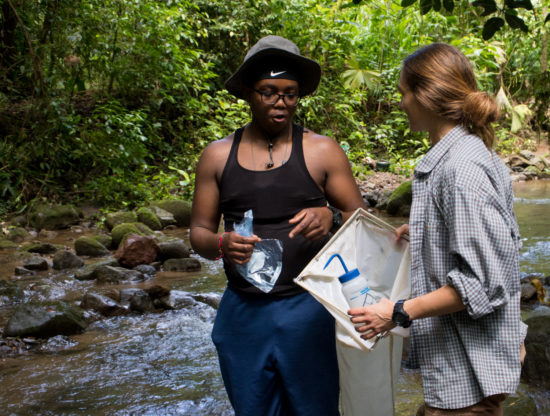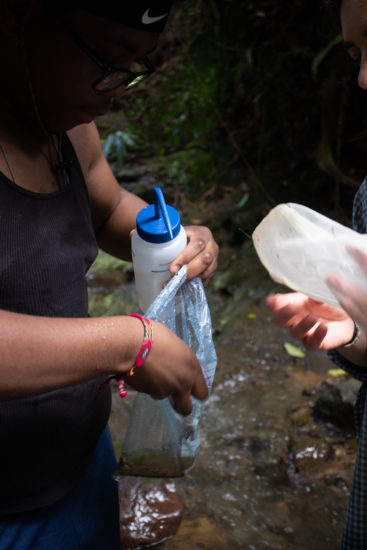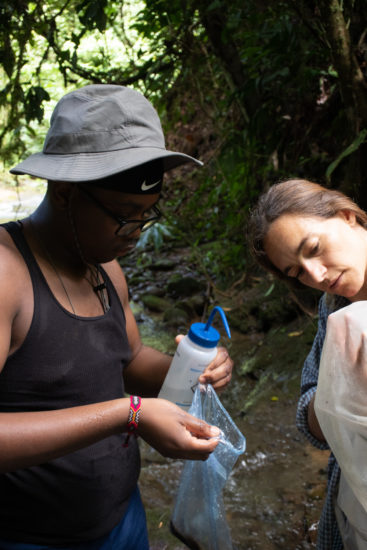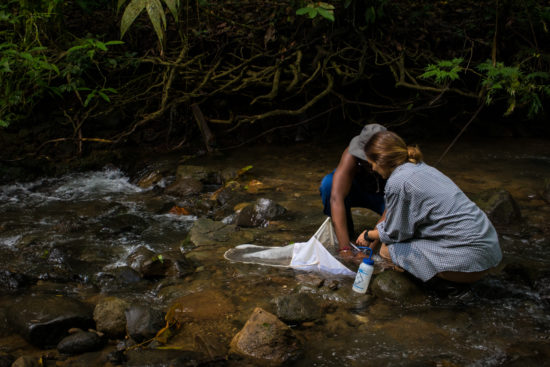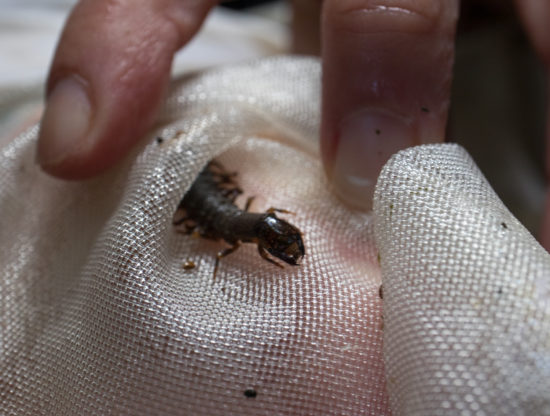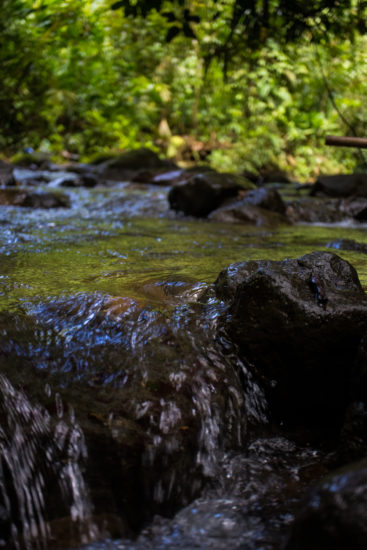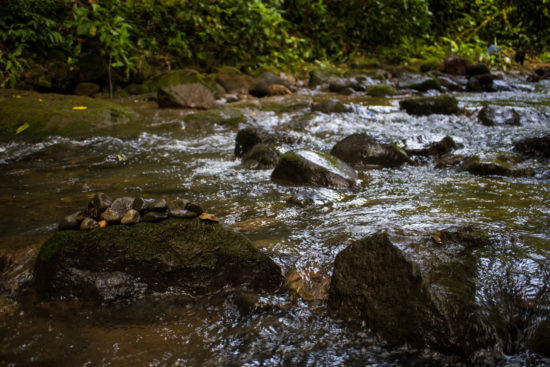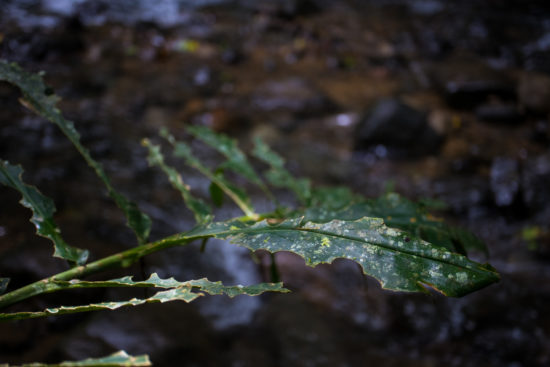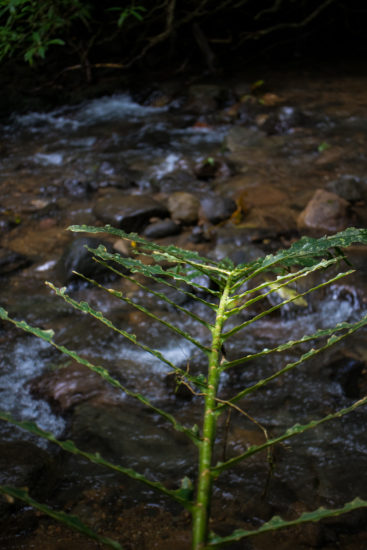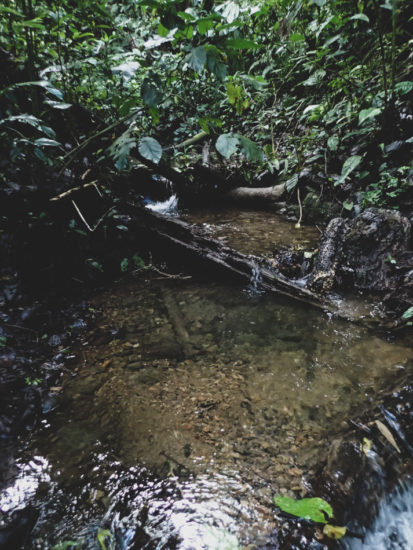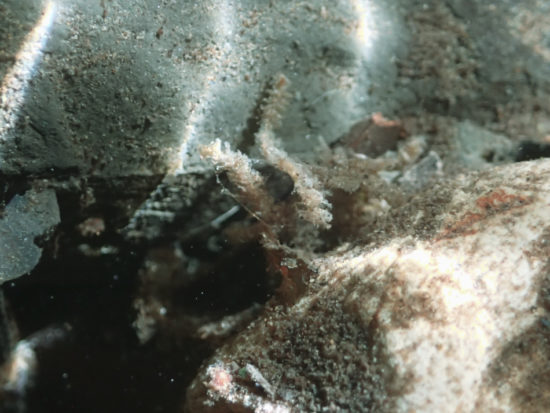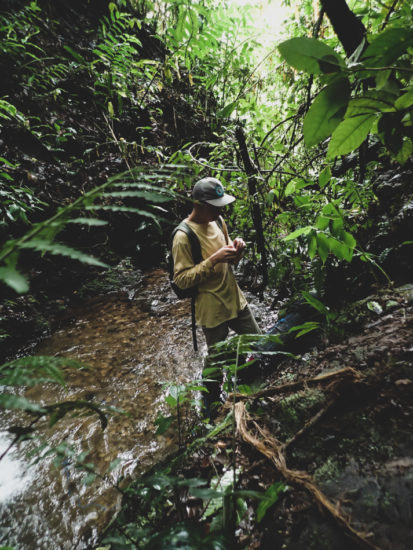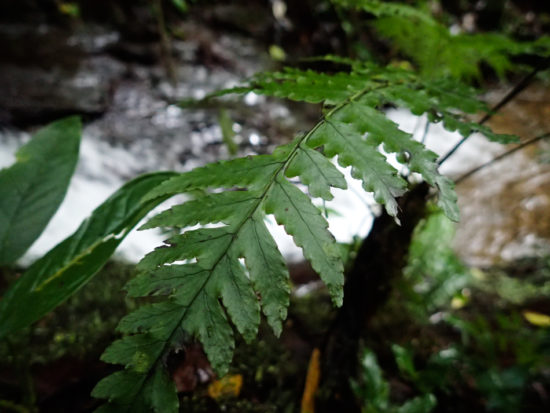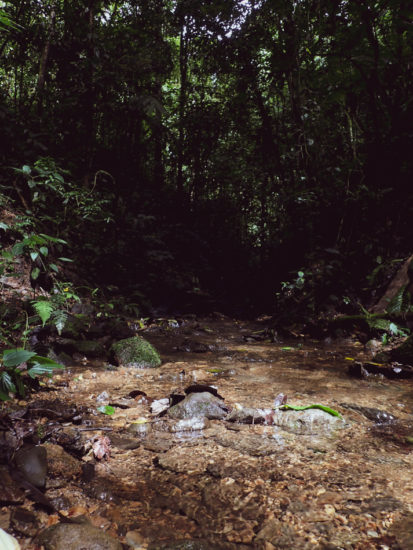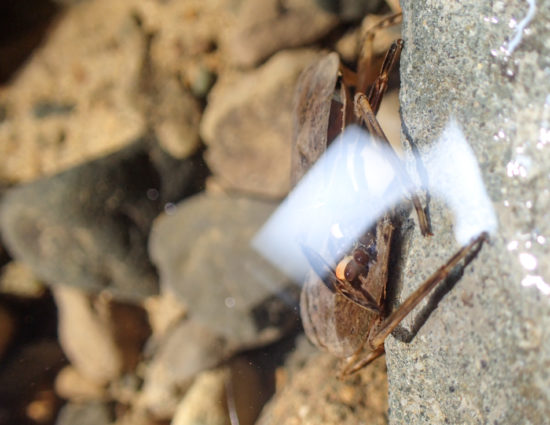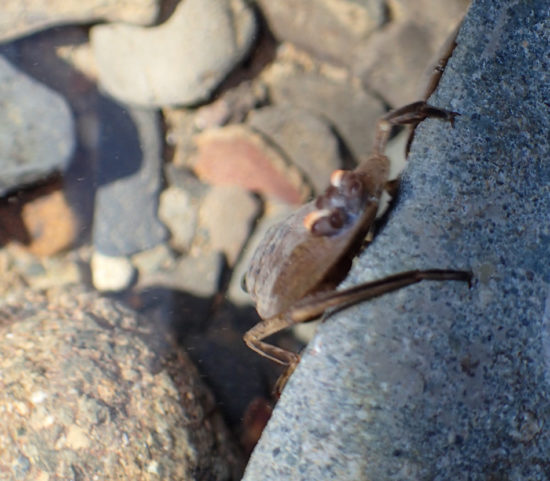Tag Archives: Streams
A start to Zane’s Crab predation experiment
As I previously mentioned, one of my students this summer, Zane, was interested in the two freshwater crabs that occur here, Allacanthos pittieri and Ptychophallus paraxanthusi, and how they may partition habitats. We find both species throughout the watershed, but it seems that the larger, P. paraxanthusi occurs in higher abundance in larger streams (i.e., the Rio Java proper), whereas A. pittieri occurs more abundantly in the smaller tributaries. This observation is a bit confounded by the lack of success we’ve had in doing mark-recapture studies (or, more generally, accurately estimating population densities). In any case, there may be some partitioning, and it could be due to a variety of factors… including predation.
While Zane started out interested in measuring crab predation risk within, at the bank, and outside of the streams to assess whether crabs may evaluate predation risk and use different parts of the stream or forest to reduce their risk (we’ve observed several individuals in the forest and on the trails!), we collected about 45 individuals—divided about equally between species. Thus, we modified the original plan: Zane would assess predation risk by species and by stream order (i.e., small, second-order streams, and a larger, third-order stream).
Crabs were tethered to monofilament line in the lab, numbered, and transported to the stream.
Some individuals had to be tethered in the field—super glue was used to tether them.
Zane and Ahmi stake the crabs into the streams with labeled flags. Crab species were pair in tethering sites.
Some habitat variables were measured, including substrate and depth of the tethering sites.
Crabs remained tethered for about nine days and were observed once a day.
And some results immediately surfaced: some crabs likely escaped by chewing the line, other lines were cleanly cut, and some damaged carapaces remained.
In other cases, parts of a missing crab were found near the tethering sites!
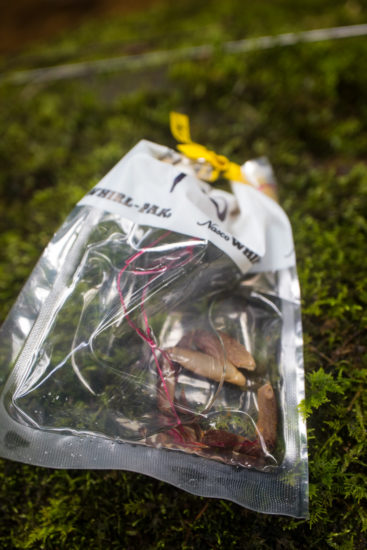
Ptychophallus paraxanthusi

Introduction to Ahmi’s project – Fish communities at Las Cruces
One of my two students for this year’s LSAMP REU is sampling and documenting the fish communities within the rivers at Las Cruces as an extension of a previous student of mine’s project (David’s). David had discovered four species, Bryconamericanus terrabensis, Brachyrhaphis terrabensis, Rhamdia laticauda, and Trichomycterus striatus, and he had presented his work at AFS. Interestingly, at Bry. terrabensis and T. striatus, have not been reported as occurring above 1,000 meter above sea level in the literature, and he thought this could be due to (1) undersampling and reporting and/or (2) recent changes in the distribution of these fishes, possibly due to climate change. One way to find out—continued monitoring. And, hence, Ahmi’s interest.
Ahmi may be employing three survey methods (visual surveys via snorkeling, seining, and minnow trapping) and sample along the entire elevational gradient within the Las Cruces property (1,000 – 1,400 masl).
Here, Ahmi practices visual surveys—a 5-10 minute zig-zag, calling out letters that represent the most likely fishes. The water is cool and turbid, making it difficult to complete, unlike some of the rivers, like Rio Madrígal, Rio Claro and Rio Nuevo, I surveyed using similar methods years ago on the Osa Penninsula.
Next, Ahmi and Zane practice seining the same pool; the current and steep, slippery banks present some difficulty, but they do catch a few.
Seining is hard work!
Some catch from the sample, including Bry. terrabensis.
High-flow at Río Java and group photo!
The beginning of June was wet—it rained nearly every day—and the river was often turbid and high. This was our first visit to the river of 2019.
Land-use impacts on macroinvertebrate predators
Darryl, one of the students mentored by Patricia, sampled his first macroinvertebates yesterday using a Surber sampler. He’s interested in functional feeding groups—groups of organisms that are categorized with one another based on what they do in the stream (their role)—and how the composition of those groups may differ with the land-use of the stream catchment. There’s a lot of literature on this, and the predictions are related to the river continuum concept—a set of theories about how the ecology of rivers changed from up- to downstream. Jacklyn, a former student of mine in the NAPIRE program, investigated the RCC.
Darryl is particularly interested in the predator functional feeding group, of which there are many: from Naucorids and Belastomatids, to some mayflies and megalopterans. Here, Darryl and Patricia take a few stream samples.
Ginger herbivory
Some herbivory, possibly by leaf cutter ants, on a ginger.
Curtis Creek
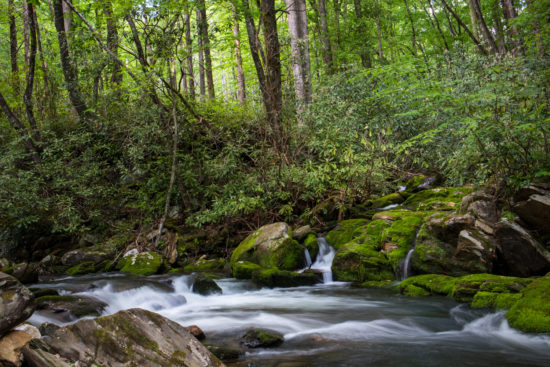
Quebrada Cerro
One of my favorite streams within the Las Cruces preserve is Quebrada Cerro, which drains nearly exclusively primary forest. The water is clear and filled with tadpoles and belostomatids, but surprisingly few crabs, to Kainalu’s disappointment.
This summer, I found a tile hot glued to a PVC pipe within the stream—a remnant of a 2015 primary productivity study one of Frank Camacho’s students was performing that was washed out in most sites.




